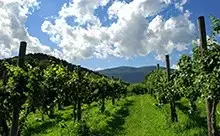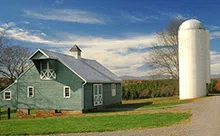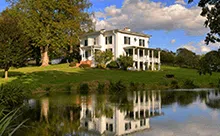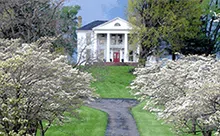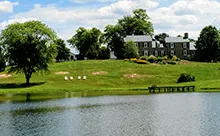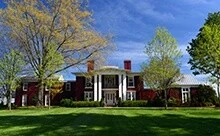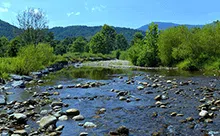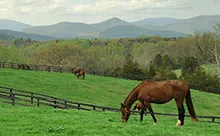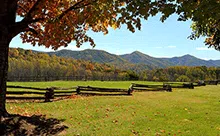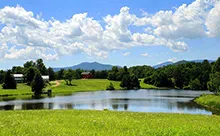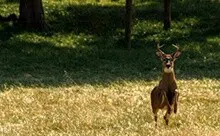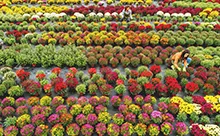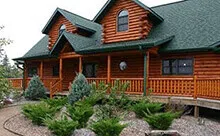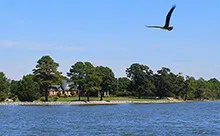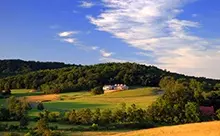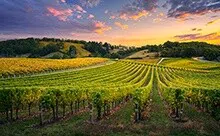
home / virginia real estate / Farms / Starting Your Virginia Farm / Chardonnay
Growing Chardonnay Grapes
Chardonnay in Virginia
Though many varieties of grape flourish in Virginia’s fertile soil, Chardonnay is by far the most extensively planted variety in the state, accounting for approximately 30 percent of current grape acreage. One reason for the abundance of Chardonnay grapes is its ability to perform well in all of Virginia’s climate zones.
The grapes grow equally well in the Eastern Shore region as in the rolling hills of the Piedmont and in the more highly elevated mountain region in southwest Virginia. As a mid-season variety, Chardonnay grapes are ripe towards the beginning of September in the warmer regions of central and eastern Virginia and the beginning of October in the cooler regions of higher elevation.
The fruit is suited to a range of wine styles, from sparkling cuvées to complex Burgundy-style products to semi-dry wines. Varietal descriptors of the bouquet include lime, grapefruit, apple, tobacco, peach, and melon.
Why Grow Chardonnay?
In Virginia, Chardonnay vines have good yields and high-quality fruit. The grapes thrive in the area, and even relatively new vineyard sites have achieved consistent yields of three to five tons per acre. Chardonnay is an incredibly adaptable vine that can be grown either upright shoot growth or downward shoot positioning, and can be maintained with cane or spur pruning.
In addition, the high quality of Chardonnay grapes grown in Virginia, area farmers have seen the demand for these grapes continue to grow over the past decade. The robust demand for high-quality Chardonnay fruit reflects the growing consumer demand for the resulting crisp, delicious Chardonnay wines.
Those beginning new vineyards should look into Chardonnay as its current planted acreage doesn’t meet the demand of Virginia wineries and the grapes can be sold locally at a substantial profit.
Weaknesses of Chardonnay
Since the land varies dramatically from one region of Virginia to the next, farmers should consider their unique soil and climate before choosing to plant a particular variety. Like with all types of grape, Chardonnay has unique weaknesses that must be weighed before you invest time, money, and land in it.
Since Chardonnay buds in early spring, there is an increased risk of spring frost damaging the crops. This threat can be minimized by careful site selection. Chardonnay is susceptible to winter cold injury, and about 50 percent of buds are killed by temperatures of -7° Fahrenheit, though the cold does not perceptibly damage the vines themselves.
Chardonnay is moderately susceptible to Botrytis bunch rot, a fungal rot that can be particularly severe when the fruit is allowed to develop in dense, shaded canopies. The incidence of Botrytis and other fruit rots can be reduced with canopy management practices that result in good ventilation of the fruit.
Chardonnay vines are highly susceptible to Grapevine Yellows, a lethal disease caused by phytoplasmas. There is currently no effective control of the disease and affected vineyards can lost up to 1% of vines each year. Vineyards most at risk are located within five miles of the Blue Ridge Mountains, and the disease is rare elsewhere in Virginia.
Like most of the state’s common grape varieties, Chardonnay is susceptible to powdery mildew, so it is imperative that Chardonnay producers are cautious with their protective fungicide program.


















